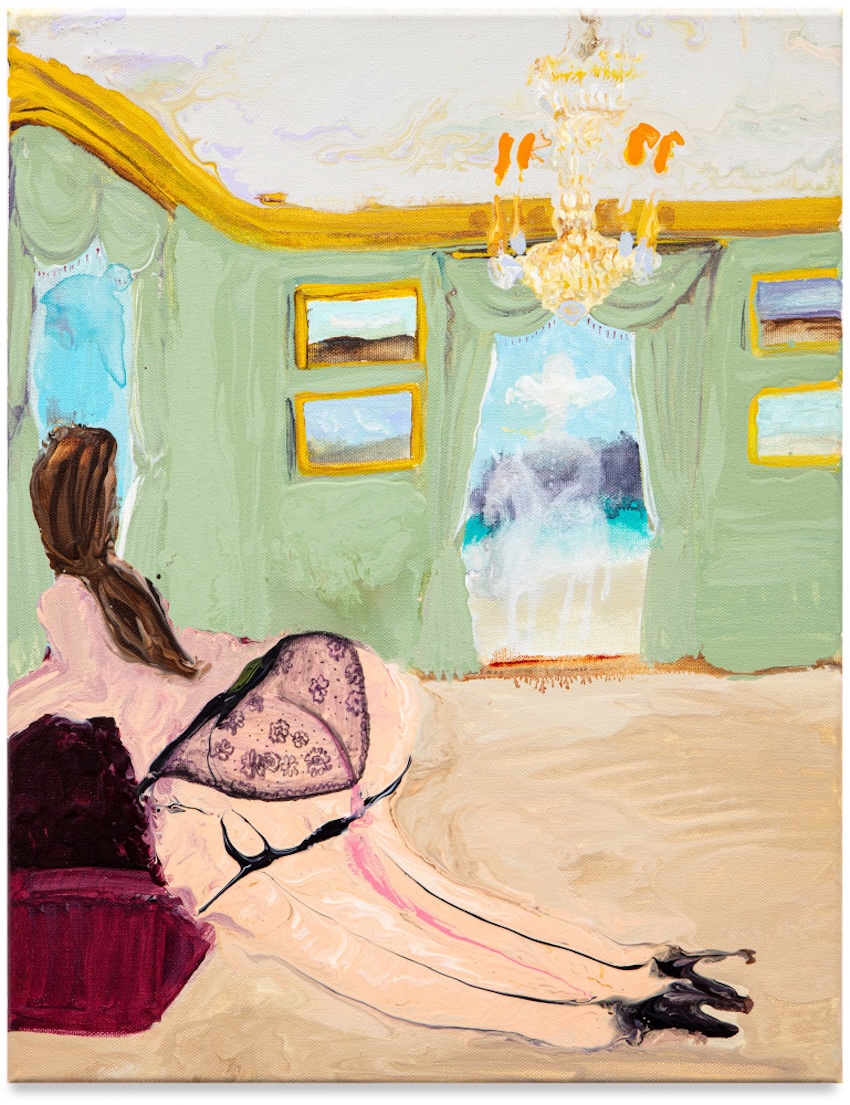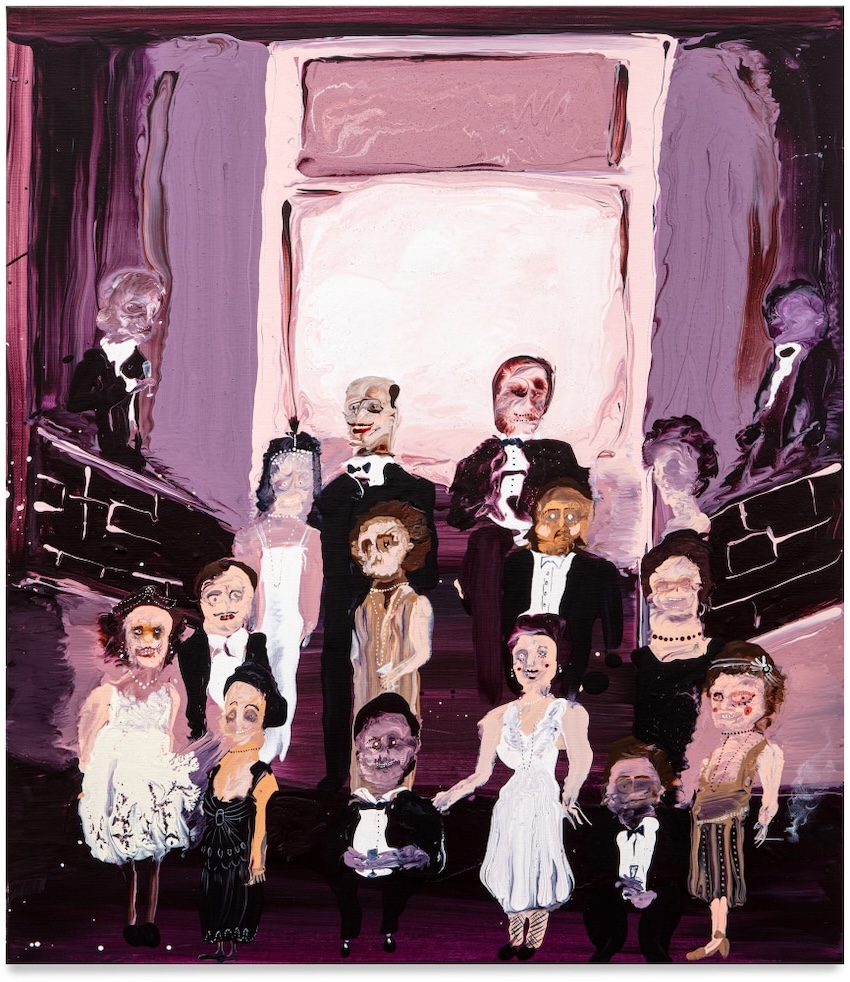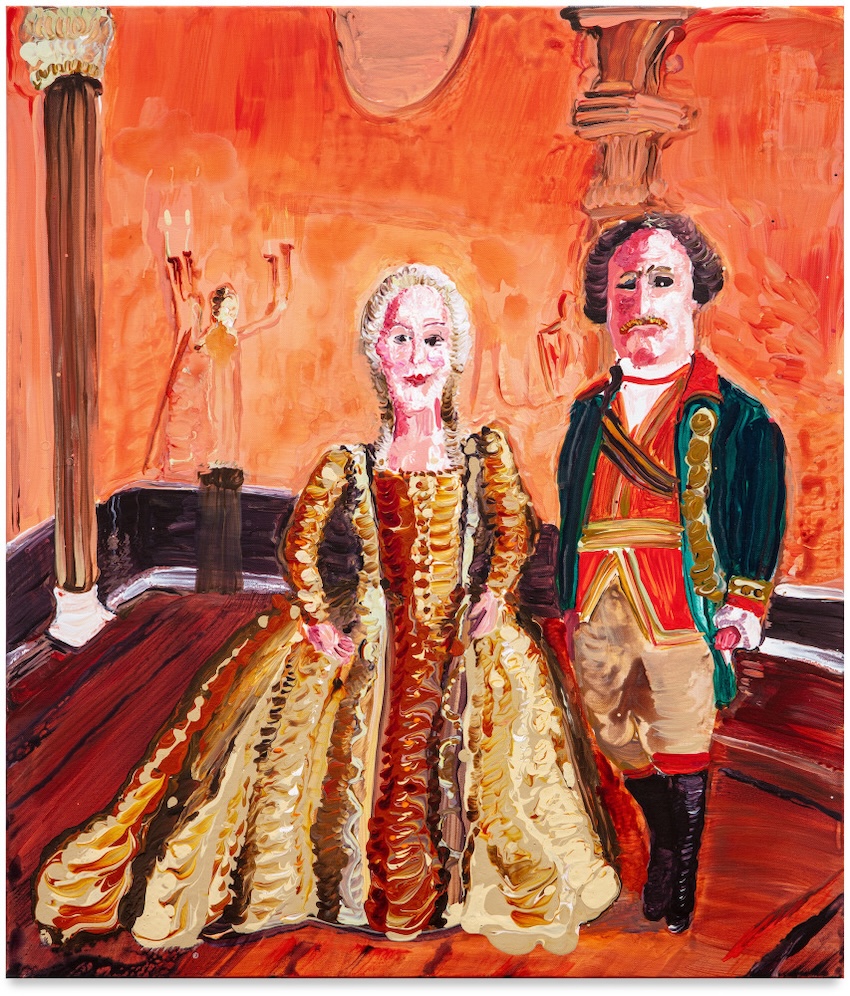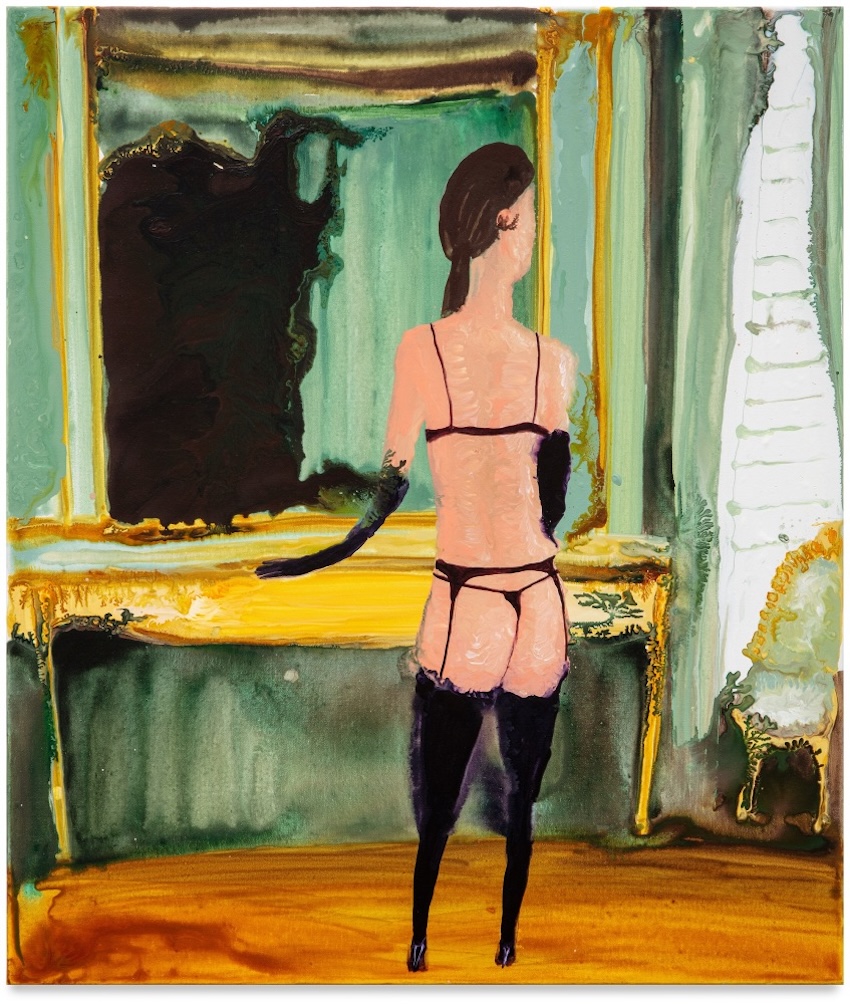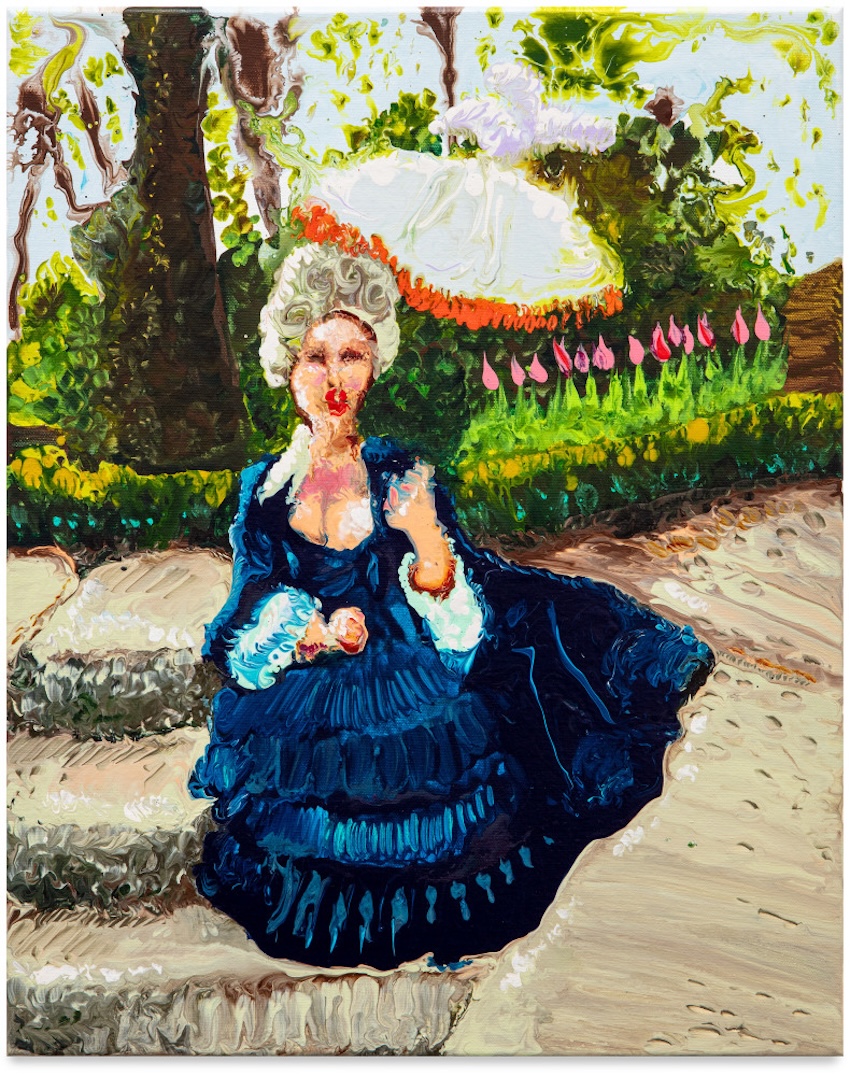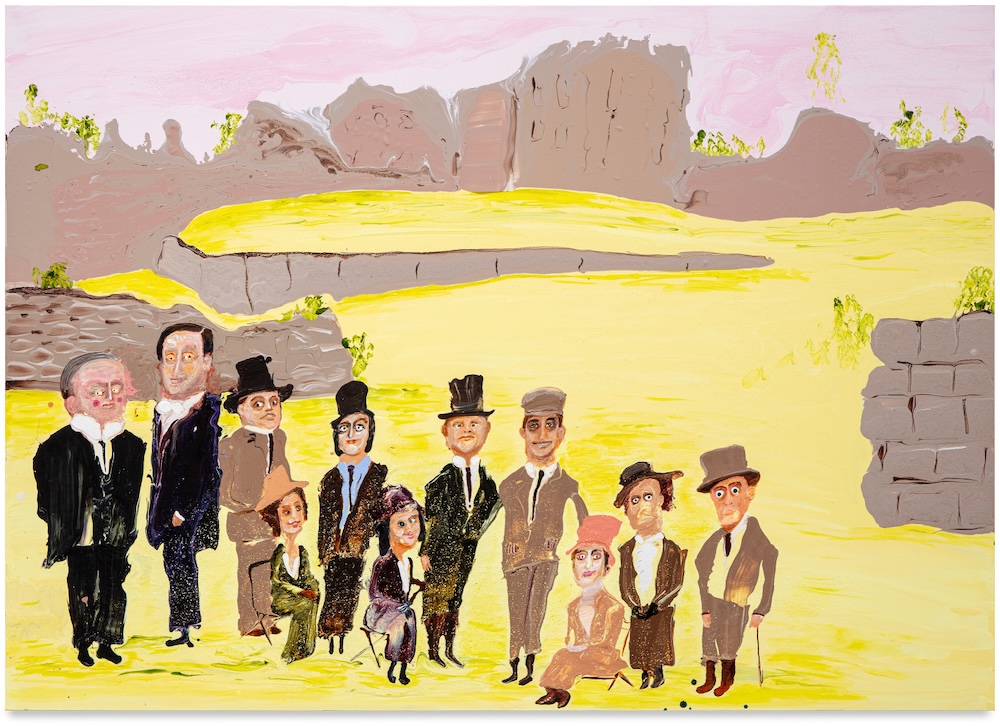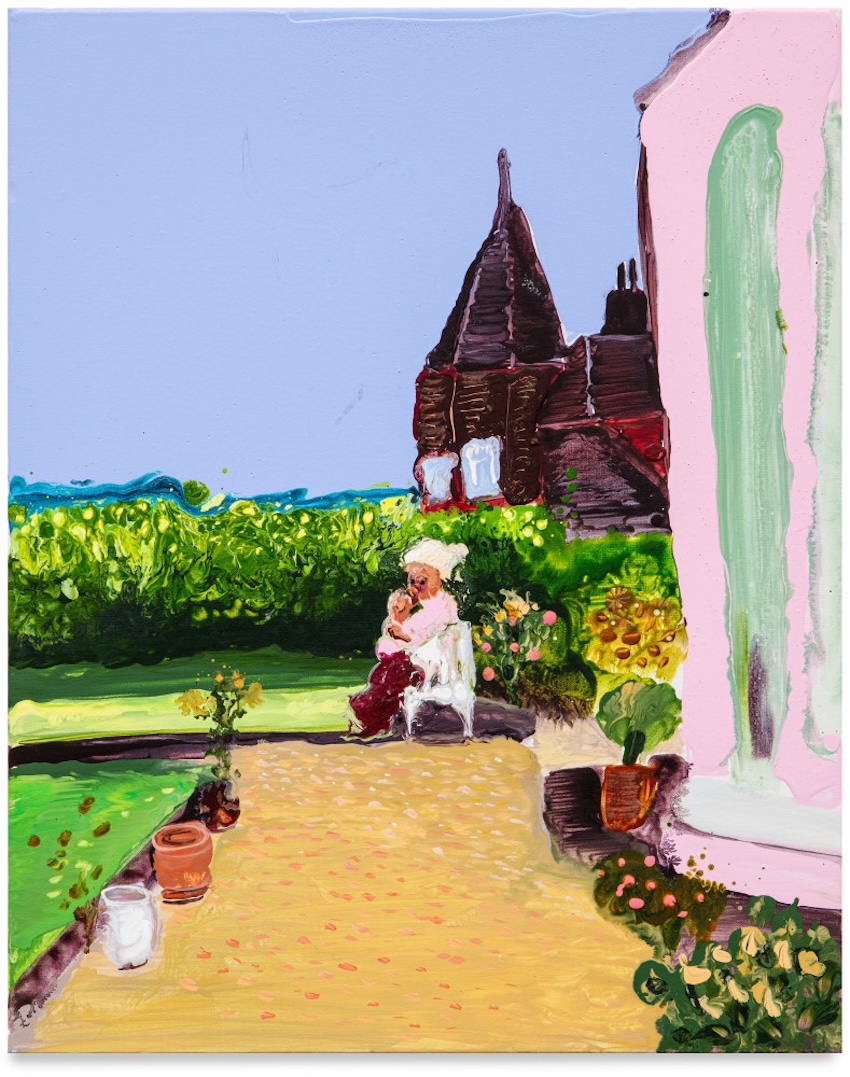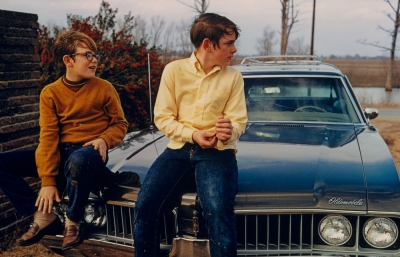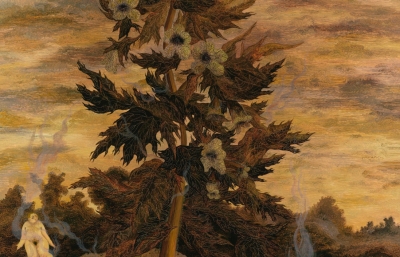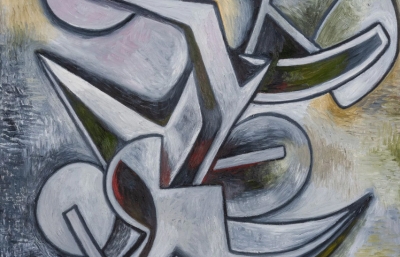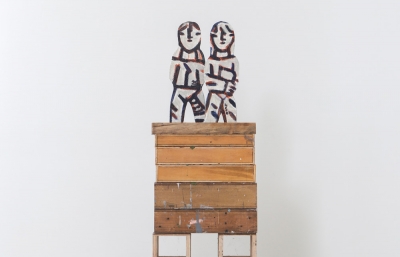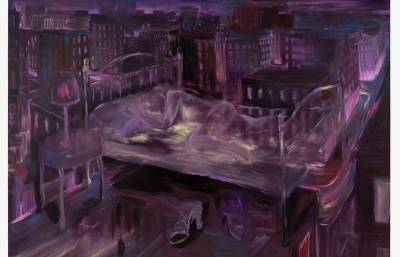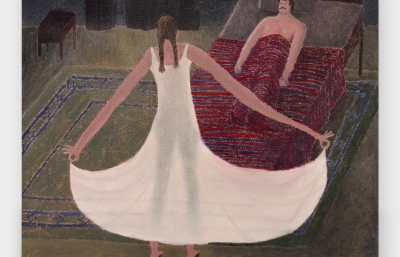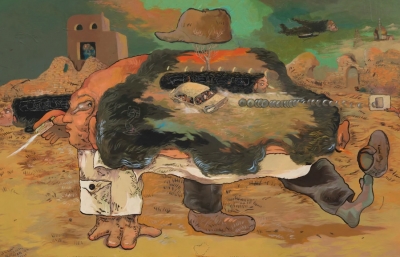Harper’s is pleased to announce Independence Day, Irish artist Genieve Figgis’s third solo exhibition with the gallery. The presentation features new works by Figgis and opens July 5, 6–8pm, with a reception attended by the artist.
Working with rich acrylics, Genieve Figgis draws from eighteenth-century art historical traditions to subvert portraits of luxury and leisure. With fanciful mark-making and dulcet palettes, the artist’s style evokes the elegance and decadence of the Rococo period. Figgis, however, inflects her lavish scenes with chilling and humorous elements. Amidst these works, one might spot ghastly figuration: the faces of Figgis’s upper-class protagonists often dissolve into macabre silhouettes, like apparitions haunting shadowy corridors. And within more risqué works, her subjects strike provocative poses as they proudly gallivant in states of undress.
Imaginary Family, for example, is a parlor tableau warped into phantasmagoric excess. Here, a procession of distorted figures stands against a Georgian façade composed of sanguine pinks and murky mauves, like the fading wallpaper in a long-abandoned manor. Gathered around a pram and dressed in extravagant finery—ruffled sleeves, bonnets, parasols, and tailored coats—the subjects appear as costumed nobles caught in a shadowy masquerade. Like wax effigies left too close to heat, their facial features become indiscernible: they melt into loose brushstrokes that transform their regal poise into a menacing sight.
In other works, like Room with a Dog and In Bed, Figgis pays close attention to interior space, depicting the ostentatious living quarters of yesteryear’s aristocracy. The artist’s decorative brushwork takes center stage in the former: swirly pastels form exquisite chandeliers and sumptuous curtains. Though devoid of the human figure, one can imagine an heiress reclining on the striped chaise lounge, leaning into the resplendent grandeur of the leisure class. In the latter, Figgis stages a rosy canopy bed in the middle of a master bedroom; a human skull overlooks the scene from atop a plush pillow in quiet repose.
Ultimately, Figgis is adept at converging contradicting aesthetics of decadence and decay, reimagining the genteel imagery of eighteenth-century portraiture through a critical lens. Her compositions seduce with lush palettes and domestic spaces, only to unsettle with eerie distortions and dark humor. By fusing historical opulence with ghostly figuration, Figgis questions the permanence of wealth, beauty, and power. Independence Day invites viewers to linger between these worlds of refinement and ruin, for it’s here where splendor becomes a bittersweet force.



